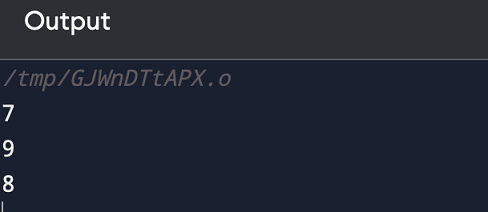Queue using stack in C++In this article, you will learn about the queue using stack in C++ with its implementation. Implementing a stack data structure as a queue, with the low-level data structure being the push (adding an element) and pop (removing an element) operations. A stack is a Last In First Out (LIFO) data structure, whereas a queue is a FIFO (First In First Out) data structure. A stack pops the element at the top and pushes a new element to the top of the stack. On the other hand, a queue enqueues (inserts) an element at the bottom while dequeuing (removes) an element from the top. Implementation of Queue:Using the stack data structure, there are two ways to implement a queue. While one approach uses one stack, the other uses two. Using two stacks:This method ensures that the oldest inserted element is always at the top of stack1 for the deQueue operation to simply pop from stack1. Stack 2 is used to position the element at the top of stack 1. enqueue(x):
dequeue(x):
Example:Let us take an example to illustrate the queue using two stacks in C++. Output: 
Using one stack:A queue can also be implemented using only one user stack, and it uses recursion. enqueue(x):
dequeue(x):
Dequeue()'s third step ensures that the final item to be popped is always returned. When only one item remains in the stack_, the recursion stops, returning the final element from stack_ in dequeue() and pushing the remaining items back into stack_. Example:Let us take an example to illustrate the queue using one stack in C++. Output: 
Benefits of Queue using stack in C++There are several advantages to implementing a queue in C++ with two stacks, especially when it comes to simplicity and efficiency in specific situations. Here are a few benefits:
Next Topicstd::subtract_with_carry_engine in C++
|
 For Videos Join Our Youtube Channel: Join Now
For Videos Join Our Youtube Channel: Join Now
Feedback
- Send your Feedback to [email protected]
Help Others, Please Share










